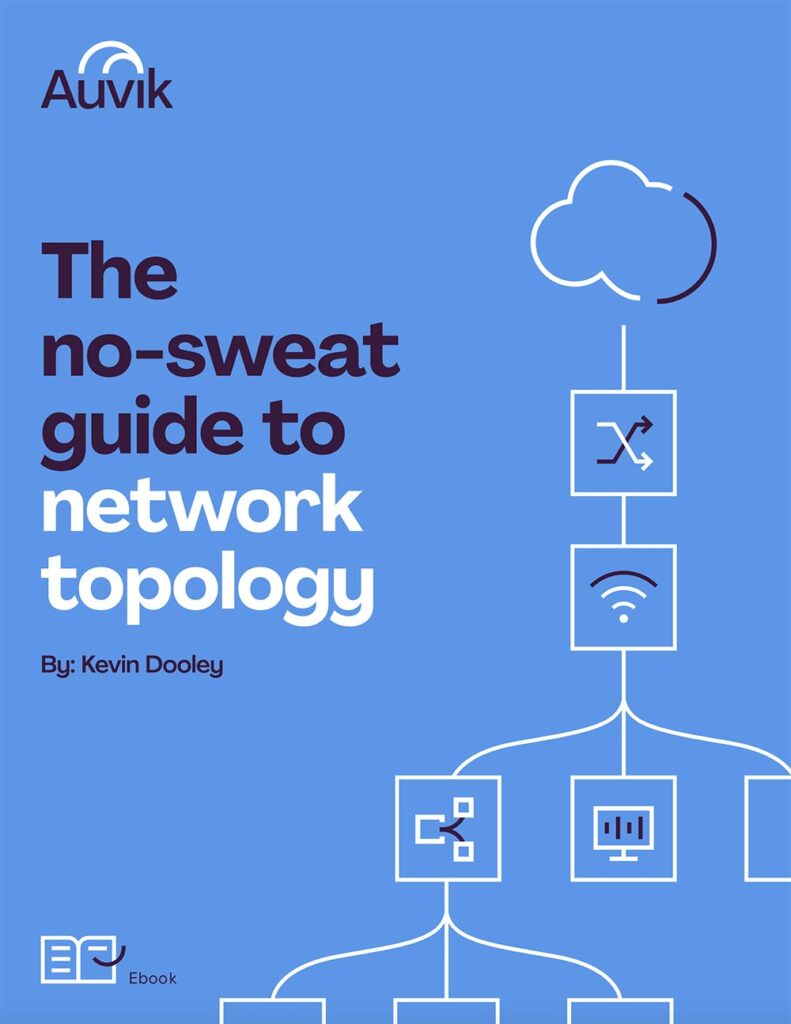As the world continues to shift toward a remote-first or hybrid work model that relies heavily on cloud applications and SaaS, new business challenges have emerged for the IT industry. One of these challenges we’ve been tracking here at Auvik is the lack of management for SaaS applications and the risks this kind of shadow IT can bring to a business. That’s why we think the 2022 Gartner Market Guide for SaaS Management Platforms (December 2022) is so critical.
Auvik identified the need for an SMP within its client base, eventually acquiring Saaslio in 2022 to address that need. Rebranded as Auvik SaaS Management (ASM), Auvik (Saaslio) is identified as a Representative Vendor in the 2022 Gartner Market Guide for SaaS Management Platforms.
We believe the 17-page report is an in-depth analysis of the current state of SaaS and where it’s headed in the future. To help you navigate this ever-evolving space, here are three of the top takeaways we have concluded from the 2022 Gartner Market Guide for SaaS Management Platforms.
1. The must-have functions of SMPs have expanded
As defined by Gartner, “SaaS management platforms (SMPs) provide central admin console capabilities to discover, manage, automate, optimize, govern and enable SaaS used by employees. SMP also enhances the protection of identities and data while using SaaS. Only SMPs offer all of these capabilities, but other adjacent tools, such as software asset management, SaaS security and office productivity governance, can provide complementary support for this work.”
Gartner now identifies seven “Primary Capabilities of SMP”:
- “Discover: Uncover sanctioned and unsanctioned SaaS use and cost.
- Manage: Centralize multi-SaaS configuration and policy management within a single console.
- Automate: Simplify SaaS administration with turnkey configuration and policy templates, workflow engine and intelligence-driven actions powered by AI/ML.
- Optimize: This includes analysis, insights, alerting, and automation to optimize SaaS cost and entitlement (licenses).
- Protect: The focus here is analysis, insights, alerting, and automation to protect organizational identities and data within SaaS. This also includes ensuring SaaS policies and configurations are compliant with corporate, security, or regulatory standards.
- Govern: Foundational capabilities include reporting, alerting, and measuring SaaS availability, as well as the breadth and depth of integrations with SaaS apps and other tools.
- Enable: Availability of an employee-facing application store or catalog to simplify SaaS requests. In addition, analysis, insights, and alerting help drive SaaS adoption and maximize ROI.”
We think anyone considering an SMP should consider Gartner’s comprehensive view of essential functionality, including a clear definition of how much is involved in managing SaaS.
We see similar expectations from customers. According to a recent survey of Auvik clients, 60% want to improve the management of their SaaS environments in three key areas:
- cost control
- operational management
- security posture improvement
In fact 89% said that there is a focus to secure SaaS environments. This resonates strongly with Gartner’s key findings: “Growing financial, security and operational risks are posed by IT’s inability to discover, govern and enable SaaS, automate management tasks, optimize costs and licenses, and protect data and identity.”
2. Managed service providers are an emerging market for SMPs
Previously, SMPs were marketed almost exclusively to large enterprise organizations. But that landscape has changed.
The 2022 report identifies three key markets served by SMPs:
- “Managed service providers (MSPs). A few SMPs primarily target MSPs, rather than IT organizations.
- Enterprise. Several SMPs sell primarily to larger enterprise organizations (+1,000 employees).
- Small-to-midsize. Most SMPs sell primarily to organizations with fewer than 1,000 employees, though several are seeing interest from larger enterprises despite not actively selling to them.”
This market expansion is important because, while organizations across the board have a growing need for SaaS management generally, exactly what they need and how they’ll use these platforms is vastly different.
Managed service providers tend to adopt SaaS management tools with the core need to automate discovery into their client’s SaaS environment. These tools reduce onboard timelines and provide a snapshot of the full inventory. MSPs tend to introduce SaaS management tools into their business practices by identifying shadow IT in their quarterly business reviews versus an ongoing review that small-to-midsize IT teams traditionally adopt. Additionally, the demand is coming upstream from their clients. According to CompTIA’s State of the Channel 2023, 47% of MSPs were asked for some level of SaaS Management from their clients.
Small-to-midsize businesses tend to adopt SaaS management tools for compliance inventorying, account inventorying, as well as management and optimization of their SaaS ecosystem. In many cases these businesses have a magnifying glass on the adoption of shadow IT with the intent of reducing threats before they expand to improve their journey of digital transformation.
Auvik SaaS Management is particularly well-suited to serve small-to-midsize businesses and managed service providers because the software was designed with discovery as a core tenant. This is normally the hardest challenge for these types of businesses as they have limited IT tooling to monitor web-based access of end users.
3. Demand for SMPs will continue to grow as more businesses recognize the realities of SaaS sprawl
As the report outlines, Gartner anticipates changes in the next 12 to 18 months as markets evolve. “Demand and budget for SaaS management will increase as organizations realize the magnitude of unmanaged SaaS cost, sprawl and risk while adoption growth remains uncontrolled.”
Though many organizations are just now discovering SMP toolsets, SaaS growth and adoption are in a perfect storm. According to the Gartner Market Report, “SaaS spending continues to grow by 15 to 20% annually, as organizations maintain an average of over 125 different SaaS applications totaling $1,040 per employee annually.” Combined with the massive shift of employees to a hybrid environment, this growth exacerbates the challenge of SaaS visibility.
What can you do to meet the challenge of SaaS sprawl?
Gartner recommends: “To effectively manage the SaaS life cycle with an SMP, IT leaders responsible for managing SaaS and/or the digital workplace must: build a balanced business case by comparing costs of an SMP and resourcing against smart objectives that align to strategic value for your organization, with clear and agreed-upon measures of objective and subjective (or tangible and intangible) benefits.”
MSPs and IT departments increasingly view SaaS growth and adoption as a threat to be met with greater visibility and control. With the introduction of Auvik SaaS Management, Auvik is meeting this challenge head-on.

Try Auvik SaaS Management now
Take the first step in reclaiming control over your SaaS environment.




